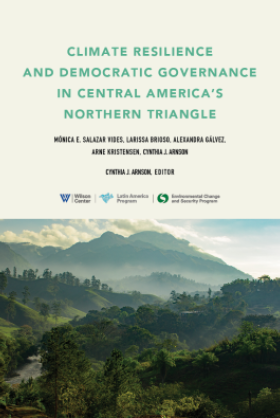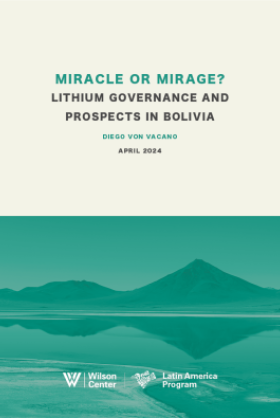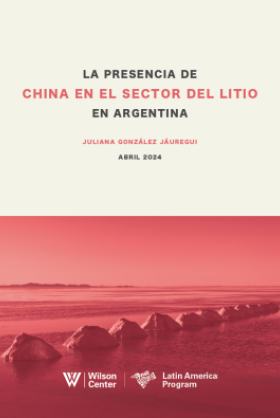Life in Balance: Partnering to Improve Reproductive Health, the Environment, and Livelihood Security
Integrating population, development, and environmental activities can improve a community's reproductive health and livelihood security, according to an innovative coalition working in the Philippines
Overview
Integrating population, development, and environmental activities can improve a community's reproductive health and livelihood security, according to an innovative coalition working in the Philippines. On December 18, representatives of the Population Reference Bureau, the Philippine Legislators' Committee on Population and Development (PLCPD), and Save the Children shared the lessons they learned with a Wilson Center audience.
Roger-Mark De Souza, the technical director of the Population, Health, and Environment Program at the Population Reference Bureau, summarized the environmental, economic, and demographic challenges facing the Philippines, highlighting the degradation of the country's coastal resources. Although they are extremely important to the Philippine economy, coastal areas are suffering from a high population growth rate, declining fisheries, and deteriorating mangrove forests and coral reefs. He stressed that population and environment problems could not be studied without considering mediating factors such as economic growth, technology, institutions, attitudes, and beliefs.
De Souza also outlined the skills that each member of the coalition contributed to the project: the Population Reference Bureau brought expertise in demography and policy analysis; Save the Children used its presence in Philippine villages to mobilize people; and the PLCPD influenced policy-making through its close ties with the Philippines Congress.
Naida Pasion of Save the Children described her organization's efforts to provide choices and build community capacity in 11 municipalities of the West Visayas region of the country. Community educators trained by Save the Children addressed the area's high population growth rates and deteriorating coastal resources by combining reproductive health information and environmental education in novel ways; for example, after a meeting to discuss reproductive health, the attendees would plant mangroves. This unique integration of population and environmental activities helped convey the program's message: family planning ensures healthy lives and saves the environment.
 According to its analysis, Save the Children's message was received: village residents increased their use of family planning products and improved their environmental practices. For example, while 60% of a control group used dynamite to fish, only 19% of the project's villagers used it after Save the Children's educational efforts. Hoping to replicate its success, Save the Children plans to expand the project into more communities in the Philippines.
According to its analysis, Save the Children's message was received: village residents increased their use of family planning products and improved their environmental practices. For example, while 60% of a control group used dynamite to fish, only 19% of the project's villagers used it after Save the Children's educational efforts. Hoping to replicate its success, Save the Children plans to expand the project into more communities in the Philippines.
Turning to the national level, Ramon San Pascual from PLCDP emphasized the need for a legislative framework to implement a coordinated Population-Health-Environment (PHE) agenda. He discussed the efforts of PLCPD's congressional members to enact laws, generate public support, and study similar efforts in other countries. PLCDP is attacking poverty and pushing the PHE agenda by engaging the Catholic Church, mobilizing local legislators, and building ties with international donors.
Speakers
Hosted By

Environmental Change and Security Program
The Environmental Change and Security Program (ECSP) explores the connections between environmental change, health, and population dynamics and their links to conflict, human insecurity, and foreign policy. Read more
Thank you for your interest in this event. Please send any feedback or questions to our Events staff.









